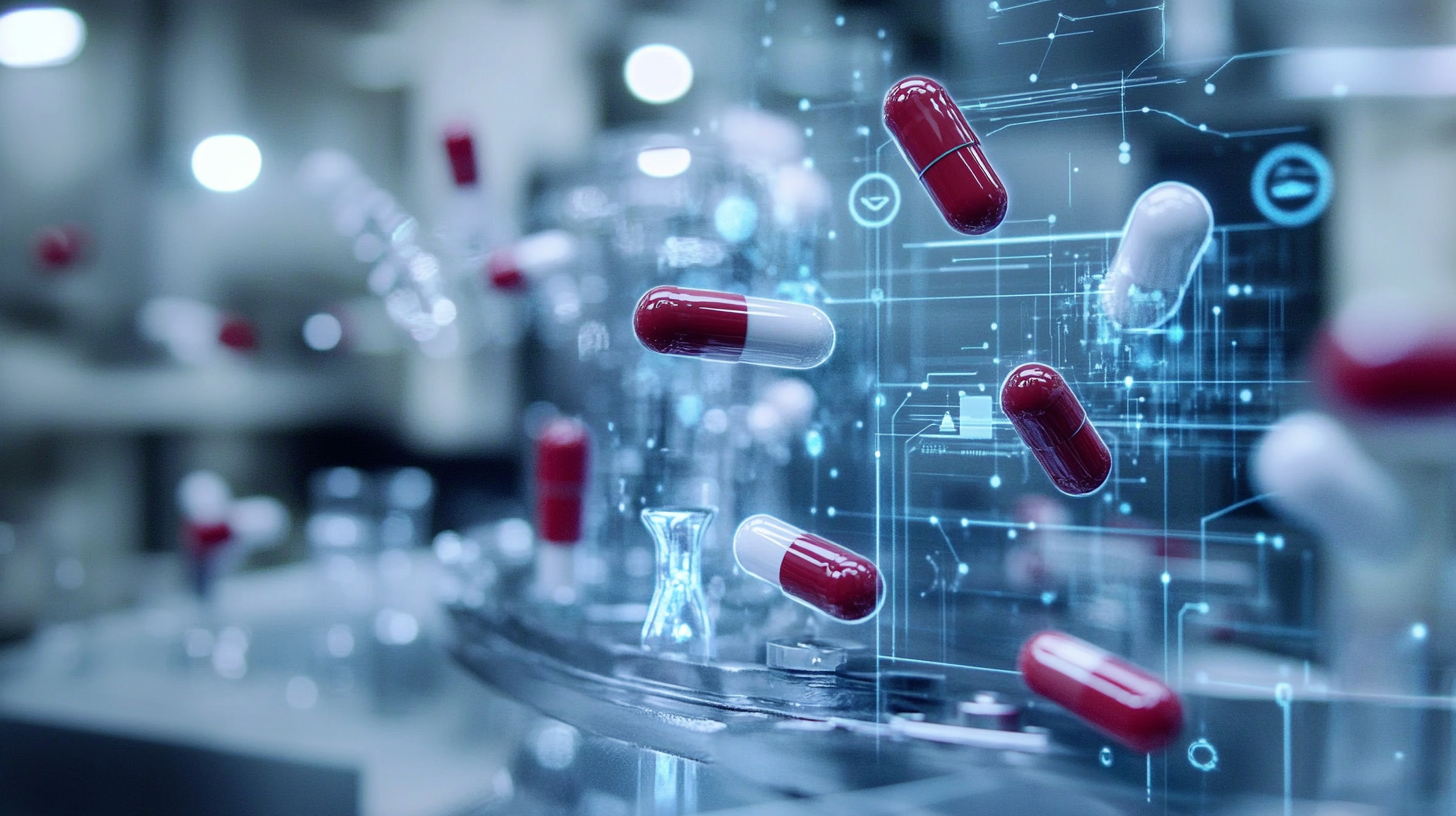
The Future of Drug Raw Material Innovation in Pharmaceutical Manufacturing
The pharmaceutical manufacturing industry stands on the brink of a transformative era as it confronts the dynamic landscape of drug raw material innovation. According to a recent report by the Global Pharmaceutical Raw Materials Market, the market is projected to reach USD 166.1 billion by 2025, growing at a CAGR of 6.8% from 2020. This growth is driven by increasing demand for generic drugs and the necessity for improved drug formulations. As regulatory challenges tighten and patient expectations evolve, manufacturers must pivot towards more sustainable and efficient sourcing of drug raw materials. Furthermore, the integration of digital technologies and data analytics is reshaping supply chain strategies, enabling real-time tracking and quality assurance that ensure compliance and enhance productivity. As we delve into the trends and best practices that will define the future of drug raw material innovation, it becomes clear that the industry's ability to adapt will determine its success in delivering high-quality therapeutics in a rapidly evolving global market.

Key Factors Driving Innovation in Drug Raw Materials
The pharmaceutical manufacturing landscape is undergoing a transformative shift, driven by several key factors that foster innovation in drug raw materials. One of the most significant influences is the increasing demand for personalized medicine. As healthcare transitions from a one-size-fits-all approach to tailored therapies, manufacturers are required to develop more sophisticated and versatile raw materials that can accommodate a range of patient-specific needs. This necessity pushes pharmaceutical companies to invest in advanced research and development, thereby driving innovation across the entire supply chain.
Another crucial factor contributing to the evolution of drug raw materials is the growing emphasis on sustainability. As the impact of pharmaceuticals on the environment comes under scrutiny, manufacturers are rethinking their sourcing and production processes. This shift involves not only the use of greener, more sustainable raw materials but also the adoption of eco-friendly manufacturing practices. As companies strive to meet regulatory demands and societal expectations, the urgent pursuit of sustainable solutions is reshaping how raw materials are developed and utilized, leading to innovative alternatives that benefit both patients and the planet.
The Future of Drug Raw Material Innovation in Pharmaceutical Manufacturing - Key Factors Driving Innovation in Drug Raw Materials
| Innovation Factor | Description | Impact on Manufacturing | Examples |
|---|---|---|---|
| Sustainable Sourcing | Utilizing eco-friendly and ethically sourced raw materials. | Reduces carbon footprint and enhances brand reputation. | Organic compounds from renewable sources. |
| Nanotechnology | Application of nanomaterials for improved drug delivery. | Enhances bioavailability and targeted delivery. | Lipid nanoparticles for mRNA delivery. |
| Synthetic Biology | Engineering of cells for the production of complex molecules. | Enables the creation of novel compounds quickly and efficiently. | Biosynthesis of antibiotics. |
| Digitalization | Use of AI and IoT for monitoring and optimization. | Improves consistency and reduces waste in manufacturing processes. | Real-time data analytics in production lines. |
| Personalized Medicine | Tailoring drugs to individual genetic profiles. | Increases efficacy and reduces adverse effects. | Gene therapy and targeted cancer treatments. |
Emerging Trends Shaping Pharmaceutical Manufacturing Practices
The landscape of pharmaceutical manufacturing is undergoing a significant transformation, driven by emerging trends that are reshaping practices within the industry. One key trend is the growing emphasis on sustainability and green chemistry. According to a report by the Global Pharmaceutical Manufacturing Industry, sustainable practices could reduce waste by up to 30% and lower production costs by 15% in the next five years. Companies are increasingly investing in eco-friendly raw materials and processes that not only meet regulatory standards but also appeal to environmentally conscious consumers.
Another critical trend is the integration of advanced technologies such as artificial intelligence (AI) and machine learning in drug raw material sourcing. A study from BioPharma Dive indicates that firms utilizing AI for supply chain management can see up to a 25% improvement in efficiency and a significant reduction in lead times. Real-time data analytics allows manufacturers to identify and mitigate risks in the procurement of raw materials, ensuring the quality and consistency of production. With these innovations, pharmaceutical companies are better equipped to respond to changing market demands while maintaining compliance with stringent regulatory frameworks.
Essential Technologies for Enhancing Raw Material Quality
The pharmaceutical industry is undergoing a transformative phase, particularly when it comes to the raw materials that form the foundation of drug manufacturing. Essential technologies have emerged to enhance the quality of these materials, ensuring that the drugs produced are both effective and safe for patient use. Innovations such as high-throughput screening and advanced analytics are pivotal in selecting and validating the raw materials used in drug formulations. By leveraging these technologies, manufacturers can mitigate the risks associated with raw material variability and improve overall product consistency.
Tips for implementing these technologies in your production process include adopting integrated data systems that connect raw material sources to production lines. This approach helps streamline quality control and assures compliance with stringent regulatory standards. Additionally, investing in automation and real-time monitoring can significantly enhance the quality assurance process, allowing for immediate corrective measures when deviations occur.
Another vital aspect is the collaboration with raw material suppliers to foster innovation. By engaging in partnerships focused on quality improvements and transparency, pharmaceutical companies can ensure the use of high-quality raw materials. Consider hosting joint workshops to discuss quality criteria and encourage suppliers to invest in their processes, leading to a win-win scenario for all stakeholders involved.

Regulatory Challenges and Considerations in Drug Development
The pharmaceutical industry is rapidly evolving, with innovation in drug raw materials playing a pivotal role in enhancing drug development. However, alongside these advancements, regulatory challenges continue to pose significant hurdles. Governments worldwide have established stringent regulations to ensure the safety and efficacy of drugs, which can sometimes slow down the innovation process. Understanding these regulations is essential for manufacturers aiming to bring new products to market.
To navigate this complex landscape, pharmaceutical companies should prioritize staying informed about regulatory changes. Regular training sessions and workshops can enhance team comprehension of compliance requirements. Additionally, fostering collaboration with regulatory bodies can lead to more streamlined processes. Engaging early with regulatory agencies can provide insights and help mitigate delays caused by compliance issues.
Another crucial consideration is the integration of quality by design (QbD) principles. By embedding quality considerations from the onset of drug development, companies can not only adhere to regulations more effectively but also promote efficiency in manufacturing processes. Adopting a proactive risk management approach will aid in identifying potential regulatory pitfalls early in the development cycle, ultimately facilitating smoother product launches.
Sustainable Practices in Sourcing Pharmaceutical Raw Materials
Sourcing raw materials sustainably is becoming a critical focus in pharmaceutical manufacturing as the industry grapples with the dual challenges of environmental impact and regulatory compliance. According to a recent report by the World Health Organization, up to 70% of pharmaceuticals can have significant environmental footprints stemming from their production. As more pharmaceutical companies aim to meet sustainability goals, innovations in sourcing and production techniques are being prioritized. For instance, leveraging renewable resources and alternative pathways in chemical synthesis can drastically reduce the ecological impact associated with traditional sourcing methods.

Tips for pharmaceutical manufacturers include pursuing partnerships with suppliers who share a commitment to sustainability, which can enhance supply chain transparency and reduce risks. Additionally, maintaining compliance with international regulations, such as the EU's REACH, ensures that organizations not only protect the environment but also bolster their reputation among consumers who prefer eco-friendly practices. Companies should also consider investing in technologies that support biodegradable material development, further demonstrating their commitment to sustainable pharmaceutical manufacturing.
As the demand for green practices grows, integrating sustainability into raw material sourcing isn't just ethical—it's becoming essential for long-term business viability. Data from recent market analyses indicate that companies adopting sustainable practices are likely to experience a 20% increase in brand loyalty among environmentally-conscious consumers. Therefore, a proactive approach to sustainable sourcing not only benefits the planet but also serves as a competitive edge in the evolving pharmaceutical landscape.
